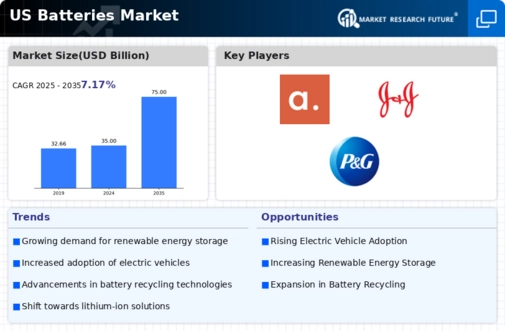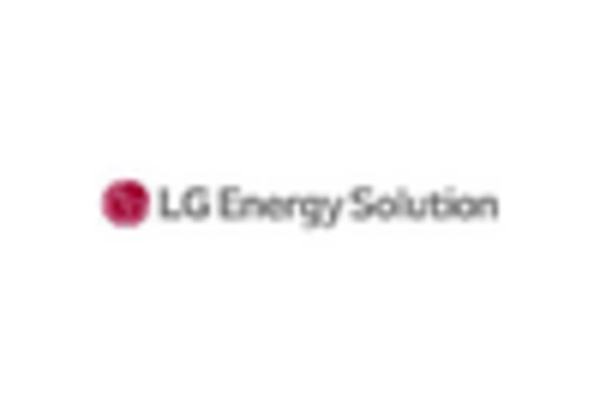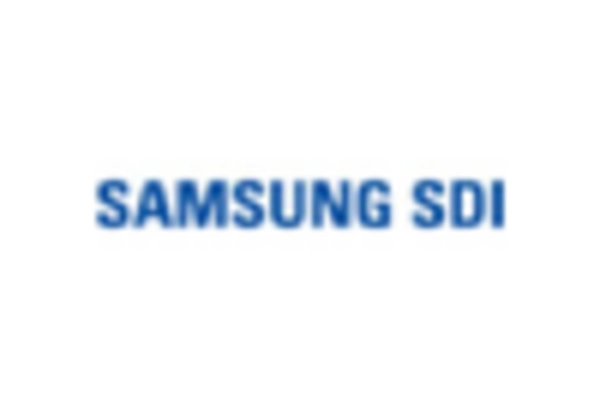Growth in Consumer Electronics
The proliferation of consumer electronics is another significant driver impacting the batteries Market. With the continuous innovation in smartphones, laptops, and wearable devices, the demand for high-performance batteries is on the rise. In 2025, the consumer electronics sector is anticipated to account for nearly 30% of the total battery demand in the US. This growth compels manufacturers to focus on developing batteries that offer longer life cycles and faster charging capabilities. The batteries Market industry must adapt to these evolving consumer preferences, which may lead to increased investments in research and development to create advanced battery technologies that meet the needs of modern electronics.
Rising Demand for Electric Vehicles
The increasing adoption of electric vehicles (EVs) is a primary driver for the batteries Market. As consumers and manufacturers prioritize sustainability, the demand for EVs is projected to grow significantly. In 2025, the EV market in the US is expected to reach approximately 5 million units sold, which could lead to a corresponding increase in battery production. This surge in demand necessitates advancements in battery technology, particularly in lithium-ion batteries, which dominate the market. The batteries Market industry is likely to benefit from this trend, as manufacturers strive to enhance battery efficiency and reduce costs, thereby making EVs more accessible to the average consumer.
Emergence of Energy Storage Solutions
The growing need for energy storage solutions is a significant driver for the batteries Market. As renewable energy sources like solar and wind become more prevalent, the demand for efficient energy storage systems is expected to rise. By 2025, the energy storage market in the US is projected to reach $10 billion, with batteries playing a central role in this growth. This trend indicates a shift towards decentralized energy systems, where batteries are utilized to store excess energy generated during peak production times. The batteries Market industry must adapt to this evolving landscape, focusing on developing scalable and cost-effective storage solutions that can support the transition to a more sustainable energy future.
Government Regulations and Incentives
Government regulations and incentives play a crucial role in shaping the batteries Market. In the US, various policies aimed at reducing carbon emissions and promoting clean energy are driving the demand for batteries, particularly in the automotive and energy storage sectors. For instance, federal tax credits for EV purchases and state-level incentives for renewable energy projects are likely to stimulate market growth. By 2025, it is estimated that these initiatives could lead to a 20% increase in battery sales, as consumers are encouraged to transition to cleaner technologies. The batteries Market industry must navigate these regulatory landscapes to capitalize on the opportunities presented by government support.
Advancements in Battery Recycling Technologies
The development of battery recycling technologies is emerging as a vital driver for the batteries Market. As the focus on sustainability intensifies, the need for efficient recycling processes becomes paramount. In 2025, the recycling rate for lithium-ion batteries is projected to increase to 50%, driven by advancements in technology and increased consumer awareness. This trend not only helps mitigate environmental concerns but also reduces the demand for raw materials, thereby stabilizing prices in the batteries Market. The industry is likely to see a shift towards circular economy practices, where recycled materials are reintegrated into the production process, enhancing sustainability and reducing waste.

















Leave a Comment